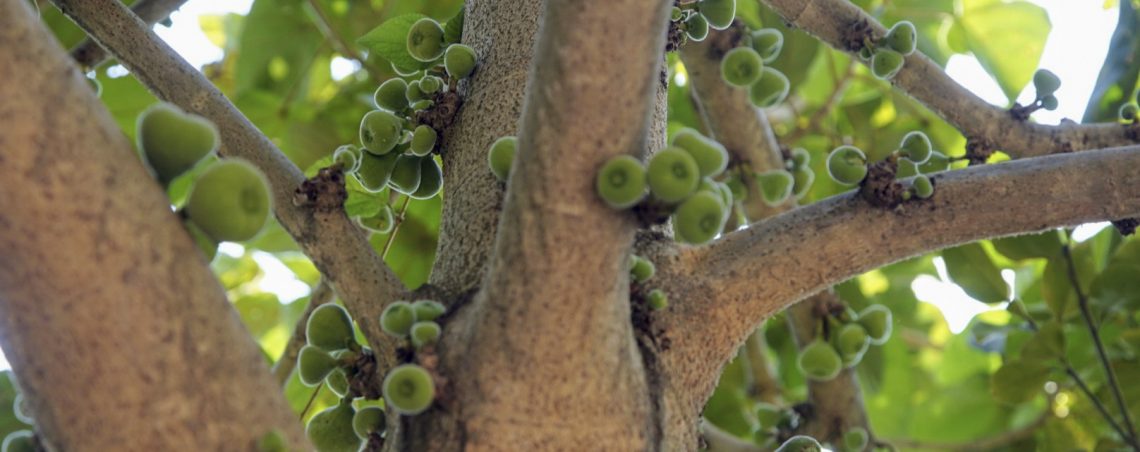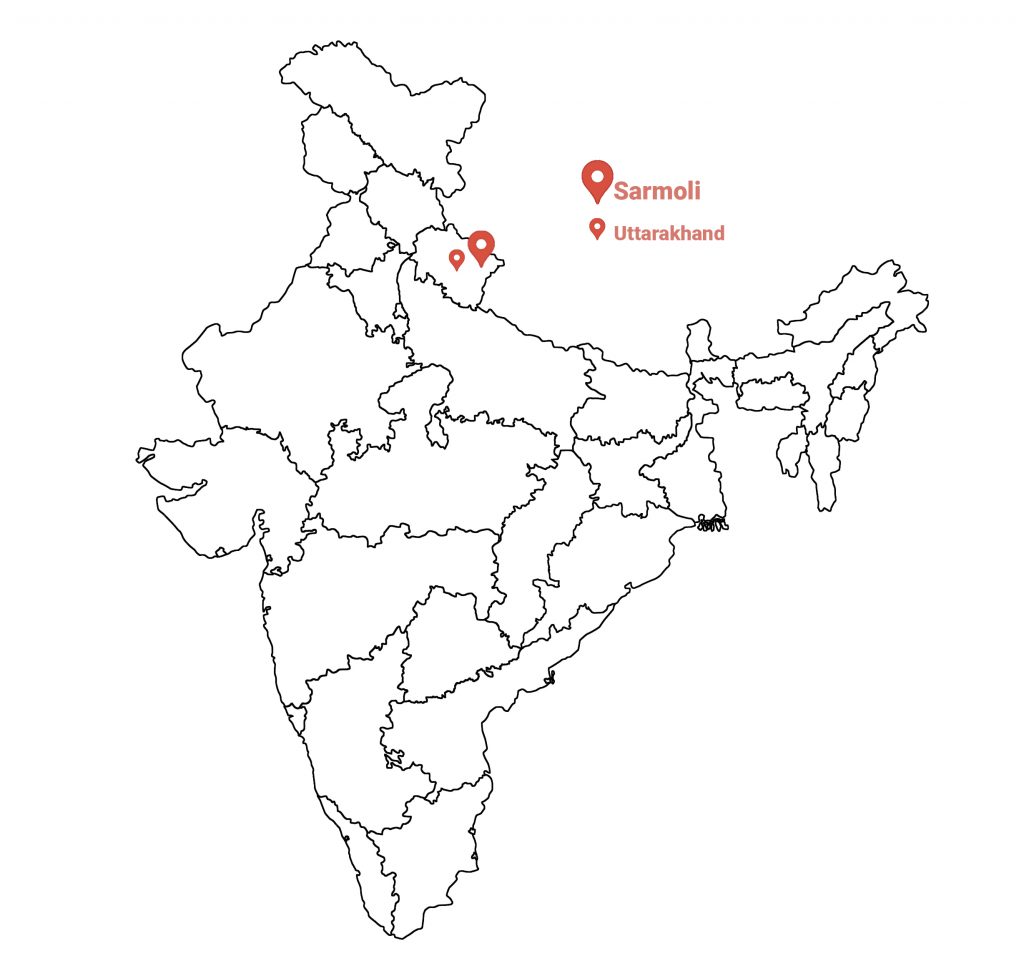
The Fig Leaf- Secrets of the Timal Tree
The Timla or the Fig tree holds multiple significance in the lives of village communities of Himalaya. This story explores the craft of making Timal leaf bowls to eat from on auspicious occasions, enquires into the mystery of the Timla flower and the folklore surrounding it and remarks on the impact of climate change on its preferred habitat. The storyteller reminds us of vital role that the biodiversity of the Himalaya plays in the survival of mountain people.

Storyteller- Bhawana Thakuni,
Village Sarmoli, Munsiari, District Pithoragarh, Uttarakhand
Read this story in Hindi
There was a time in Uttarakhand when, on any occasion of a puja, marriage or an auspicious function in our villages, we would procure sacks full of Timla or Fig leaves from the warmer villages of the Gori valley.
My grandmother says-
“In the earlier days, we would sit together on festive and auspicious occasions and prepare ‘pur’ or bowls and plates made of the Timla leaves to eat on. Where were there any thalis or disposable plates to be had like today, that are now the cause of so much pollution!”
In those days water sources and streams to wash plates in were far away from the village and it made sense to use leaves. Once eaten on, the Timla leaves would be collected and fed to our animals. Any remaining leaves were used to make natural fertilizer.
A woman who married into our village from Bageshwar district, tells of how she had not seen the Timla tree in Sarmoli when she arrived 3 decades ago. Timla leaf plates were used in her marriage and even today they are used for weddings and pujas as is the custom, as the leaf is considered to be pure.
Another woman, whose childhood was spent in the mid-Himalay, reminisces on how in her childhood she enjoyed making spicy chutney from Timla fruit in the hot summers. Till today she is confounded by the fact that she never managed to find the Timla flower. She was told as a child that whoever finds the Timla flower would find untold wealth and become rich.
While crafting this video story, I learned the secret of the flowers of the Timla tree.
I learned how to make the pur or bowls from the Timla leaves.
I got to know that the Timla or Fig tree which was earlier found only in lower altitude hot valleys of the Himalay, is now seen growing in our village Sarmoli and in the neighbouring village of Shankhadhura. This has transpired in the last decade or so because of climate change and increasing heat, even though the stature of these trees is still small.
Our Himalayan villages and its rural communities are still dependent on our forests.
I believe that not only the Timla leaves, but the many broad leaves to be found in our forests and village can be made into pur and bowls to eat food on at large events. This would reduce the unsightly garbage heaps caused by the extensive use of disposable plates.
Perhaps the most essential truth is that we continue to appreciate the importance of forests and the diversity of life they hold, for the sustenance and survival of our Himalayan villages.
Meet the storyteller






